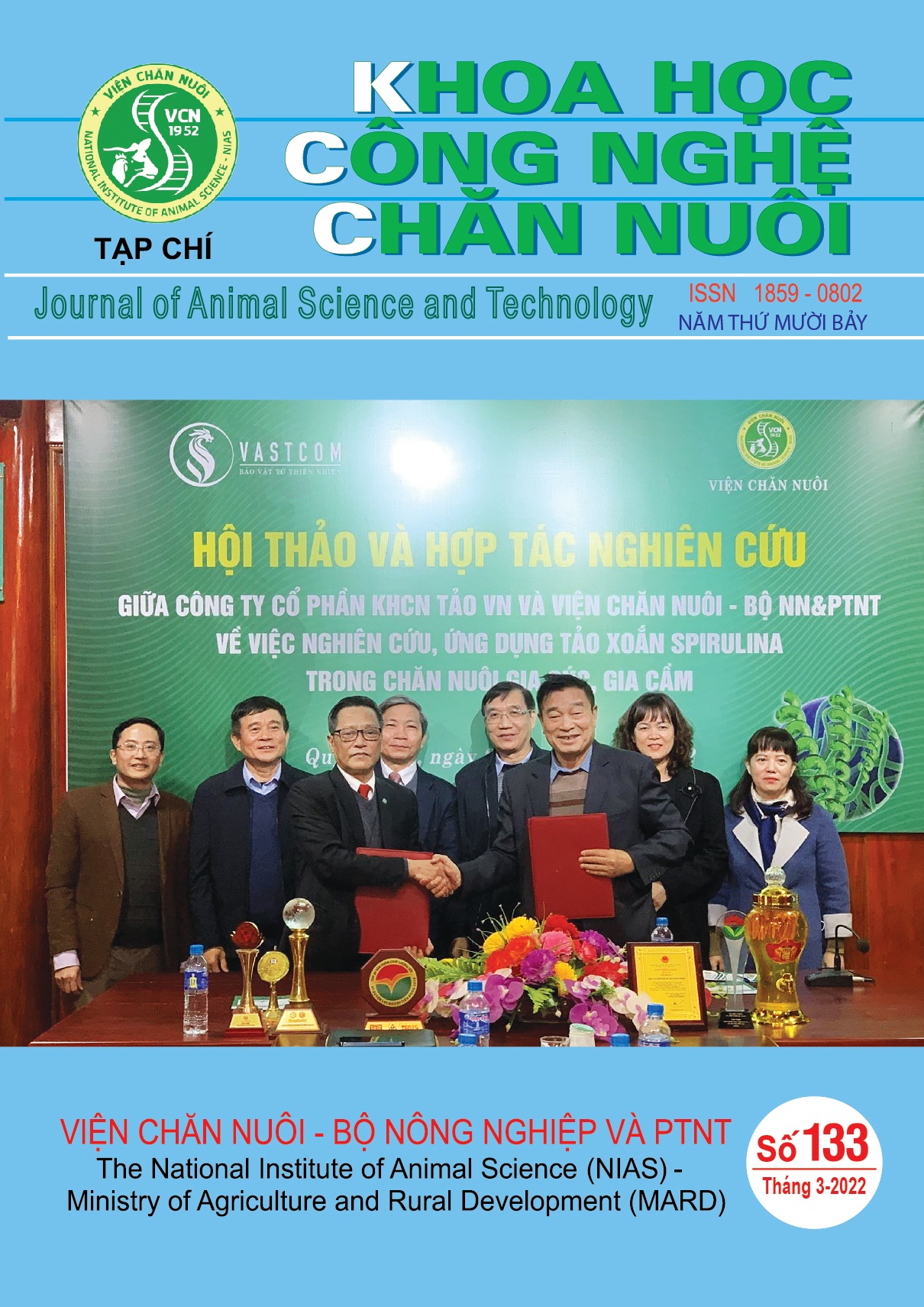Current status of the reproductive cattle in Mo Cay Bac and Giong Trom district, Ben Tre province
The present study was conducted to evaluate the current status of livestock production, the situation of diarrhea disease, and the use of antibiotics in reproductive cattle in Mo Cay Bac and Giong Trom districts, Ben Tre province. The survey was performed from November 2021 to January 2022 on 180 reproductive cattle households with a total of 884 cattle. Primary and secondary data were collected via cross-sectional and retrospective methods, respectively. The results indicated that the number ofcattle in Ben Tre province increased steadily over the period from 2018 to 2021, an average of 1.82% per year. The average herd size of households in Mo Cay Bac and Giong Trom district was respectively 4.45±1.96 heads/household and 5.14±2.98 heads/household, in which the percentage of reproductive cattle accounted for 48.3-52.2%. All households applied the captive method and artificial insemination for their reproductive cattle. The proportion of households with steady stables: 65.8-70.0%, making a logbook in the pregnancy period of cows: 86.7-90.0%, helping cows give birth: 71.7- 77.5%, selling calves under 12 months old: 72.5-76.7%, and vaccinated the lumpy skin disease: 91.7-94.2%. The prevalence of diarrhea in cattle in two districts ranged from 22.2 to 25.8%, in which calves under 12 months old suffer from diarrhea the most. The households used antibiotics for the highest treatment of diseases: 75.8-81.7%. The households used the most antibiotics were Colistin: 40.8-45.0%, Ampicillin: 23.3-35.0%, Tetracycline: 15.8-21.7%, and Streptomycin: 15.0-16.7%.

